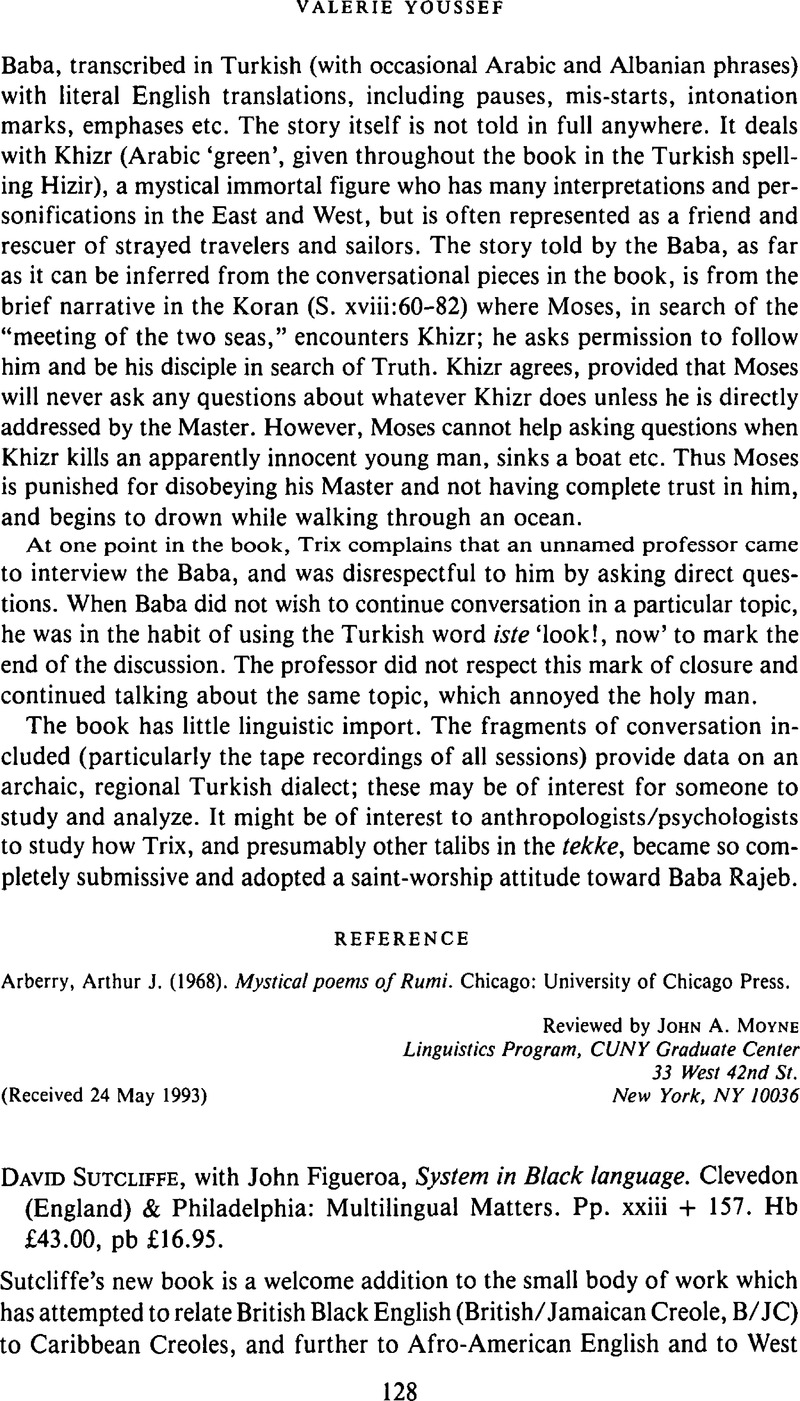No CrossRef data available.
Article contents
David Sutcliffe, with John Figueroa, system in Black language. Clevedon (England) & Philadelphia: Multilingual Matters. Pp. xxiii + 157. Hb £43.00, Pb £16.95.
Published online by Cambridge University Press: 19 February 2009
Abstract
An abstract is not available for this content so a preview has been provided. Please use the Get access link above for information on how to access this content.

- Type
- Reviews
- Information
- Copyright
- Copyright © Cambridge University Press 1994
References
REFERNCES
Arends, Jacques (1989). Syntactic development in Sranan:Creolization as a gradual process. Dissertation, University of Nijmegen.Google Scholar
Baugh, John (1992). Hypocorrection: Mistakes in production of vernacular African American English as a second dialect. Language & Communication 12:317–26.CrossRefGoogle Scholar
Butters, Ron (1987). ed. Special issue on convergence and divergence in afro-American Speech. American Speech 62:1.Google Scholar
Carrington, Lawrence D. (1992). Images of creole space. Journal of Pidgin & Creole Languages 7: 93–9.CrossRefGoogle Scholar
Dalphinis, Morgan (1985). Caribbean and African languages: Social history, language, literature and education. London: Karia.Google Scholar
Edwards, Viv(1986). Language in a Black Community,Avon, England: Multilingual Matters.Google Scholar
Holm, John (1988). Pidgins and creoles, l: Theory and structure. Cambridge & New York: Cambridge University Press.Google Scholar
Lalla, Barbara, & D'Costa, Jean (1990). Language in exile.UniversityUniversity of Alabama press.Google Scholar
Le page, Robert, & Tabouret-Keller, Andrée (1985).Acts of identity: Creole-based approaches to language and ethnicity. Cambridge & New York: Cambridge University Press.Google Scholar
Mufwene, Salikoko (1986). The universalist and substrate hypotheses complement one another. In Muysken, Pieter & Smith, Norval (eds.), Substrata Versus universals in creole genesis, 129–62. Amsterdam: Benjamins.CrossRefGoogle Scholar
Sebba, Mark, & Le page, Robert (1983). Sociolinguistics of London Jamaican English: Report on the pilot proiect (1981–2). University of York, Dept. of Language (mimeo).Google Scholar
Solomon, Denis (1972). Form, content and thew post-creole continuum. Paper presented at the Conference on Creole Language &Educational Development,University of the West Indies,St. Augustine, Trinidad.Google Scholar
Welmers, William (1973). African language strcutures. Berkelry: University of California Press.Google Scholar
Winford, Donald (1972). A sociolinguistic descripition of two communities in Trinidad. Dissertation, University of York.Google Scholar
Winford, Donald (1984). The linguistic variable and syntactic variation in creole continua. Lingua 62: 267–88.CrossRefGoogle Scholar
Winford, Donald (1988). The creole continuum and the notion of the speech community as locus of language. International Journal of the Sociology of Language 71:91–105.CrossRefGoogle Scholar




